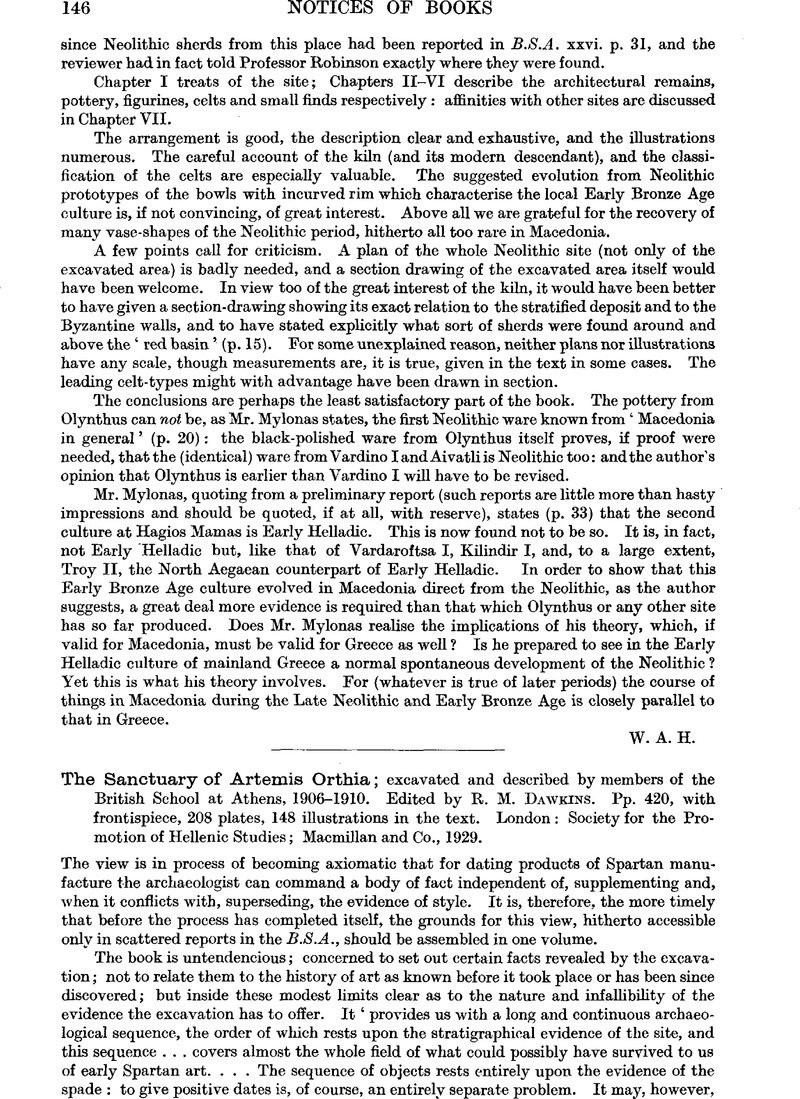No CrossRef data available.
Article contents
The Sanctuary of Artemis Orthia; excavated and described by members of the British School at Athens, 1906–1910. Edited by R. M. Dawkins. Pp. 420, with frontispiece, 208 plates, 148 illustrations in the text. London: Society for the Promotion of Hellenic Studies; Macmillan and Co., 1929.
Review products
Published online by Cambridge University Press: 23 December 2013
Abstract

- Type
- Notices of Books
- Information
- Copyright
- Copyright © The Society for the Promotion of Hellenic Studies 1930
References
page 148 note 1 Professor Droop, who does not admit Formgefühl as an element of style with chronological value, is led by his criteria of fashion and mechanism to set this vase late in LAC. III. But Formgefühl is here confirmed by stratigraphy.
page 148 note 2 The loss of much of the later LAC. II stratum is also suggested by the fact that the 15,000 surviving lead figurines from under the sand show no difference in LAC. II. This would be surprising at this progressive time if one had a full series over the whole period.
page 149 note 1 ProfessorDroop, states elsewhere (J.H.S., 1910, pp. 1–2)Google Scholar that there is no separate layer of LAC. IV, which occurs always with a preponderating amount of LAC. III or V; but that in the absence of stratigraphical evidence we must rely on that of style.
page 149 note 2 These identifications are made from the photographs and need to be confirmed; but they seem pretty certain.
page 149 note 3 In the same campaign and, so far as one can judge, in the same environment, was found the bronze sphinx (B.S.A., 1909–10, p. 17) which Professor Droop states on p. 202 to be LAC. III. In this unstratified area beyond the sand and towards the river we have thus Geometric, LAC. III, V, VI, and Hellenistic. Professor Droop's statement (ibid.) that ‘the above chronological grouping is in no wise a priori but rests throughout on good evidence from stratification’ is, of course, a generalisation.
page 150 note 1 Herodot. I. 66, ![]()
![]() He is speaking of about 600 B.C., the prelude to the reigns of Leon and Hegesikles.
He is speaking of about 600 B.C., the prelude to the reigns of Leon and Hegesikles.
page 150 note 2 Fig. 86, No. 9 (= S.E.G., ii. 95) gives us no such evidence. Cf. the very similarly written No. 3 (S.E.G., ii. 36).


